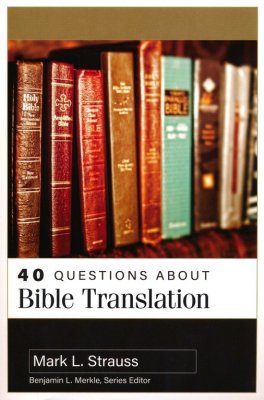
One of my favorite ways to study the Gospels is to do a synopsis — a careful side-by-side comparison of what different authors say about the same event. I’ve found that closely looking for similarities and differences can help new insights pop off the page.
A simple example of this is to compare Matthew and Mark’s accounts of Christ and the rich young man (we could add in Luke 18 as well, but for now let’s just keep it simple). If you were teaching this event, you could ask your children or students to carefully read Matthew 19:16-22 and Mark 10:17-22 and carefully look for similarities and differences in the accounts. I’m including both accounts below and (spoiler alert!) am bolding some key differences, so you may want to try this on your own before reading further.
Matthew 19:16-22: “And, behold, one came and said unto him, Good Master, what good thing shall I do, that I may have eternal life? And he said unto him, Why callest thou me good? there is none good but one, that is, God: but if thou wilt enter into life, keep the commandments. He saith unto him, Which? Jesus said, Thou shalt do no murder, Thou shalt not commit adultery, Thou shalt not steal, Thou shalt not bear false witness, Honour thy father and thy mother: and, Thou shalt love thy neighbour as thyself. The young man saith unto him, All these things have I kept from my youth up: what lack I yet? Jesus said unto him, If thou wilt be perfect, go and sell that thou hast, and give to the poor, and thou shalt have treasure in heaven: and come and follow me. But when the young man heard that saying, he went away sorrowful: for he had great possessions.
Mark 10:17-22: ” And when he was gone forth into the way, there came one running, and kneeled to him, and asked him, Good Master, what shall I do that I may inherit eternal life?
And Jesus said unto him, Why callest thou me good? there is none good but one, that is, God. Thou knowest the commandments, Do not commit adultery, Do not kill, Do not steal, Do not bear false witness, Defraud not, Honour thy father and mother. And he answered and said unto him, Master, all these have I observed from my youth. Then Jesus beholding him loved him, and said unto him, One thing thou lackest: go thy way, sell whatsoever thou hast, and give to the poor, and thou shalt have treasure in heaven: and come, take up the cross, and follow me. And he was sad at that saying, and went away grieved: for he had great possessions.”
I love the details that both Matthew and Mark provide. From Matthew we learn that the person was young. Perhaps this gives us more charity and understanding for him, given his inexperience. Did you notice how neither Matthew or Mark refer to the man as a “ruler”? So why is he often called, “The rich young ruler?” (Hint – remember we didn’t include Luke 18 in our analysis).
I also love how Mark tells us that the man “came running, and kneeled.” This helps us see the young man’s exuberance and desire to follow the Savior. Do I have this kind of excitement?
The young man’s powerful question, “What lack I yet?” is found only in Matthew. Do I have the courage to ask this question in prayer? I love what President Henry B. Eyring taught, “If you have had trouble getting answers to your prayers, try asking today, ‘What is there that you would have me do?’ That prayer will be answered if you are sincere and if you listen like a little child, with real intent to act.”
And of course, even though the young man didn’t immediately follow the Savior’s invitation, Jesus still looked at him and, according to Mark, “Loved him.” We will often stumble and fall short – but Jesus still loves us.
Hopefully this has given you a taste for how carefully reading gospel accounts side-by-side can help make principles easier to find. I’ve prepared some handouts to help you do a synopsis study on some key events of the Savior’s life. I hope they will be useful to you!
Here’s a different take on how you could use the idea behind a synopsis in teaching. It’s definitely a creative approach!




